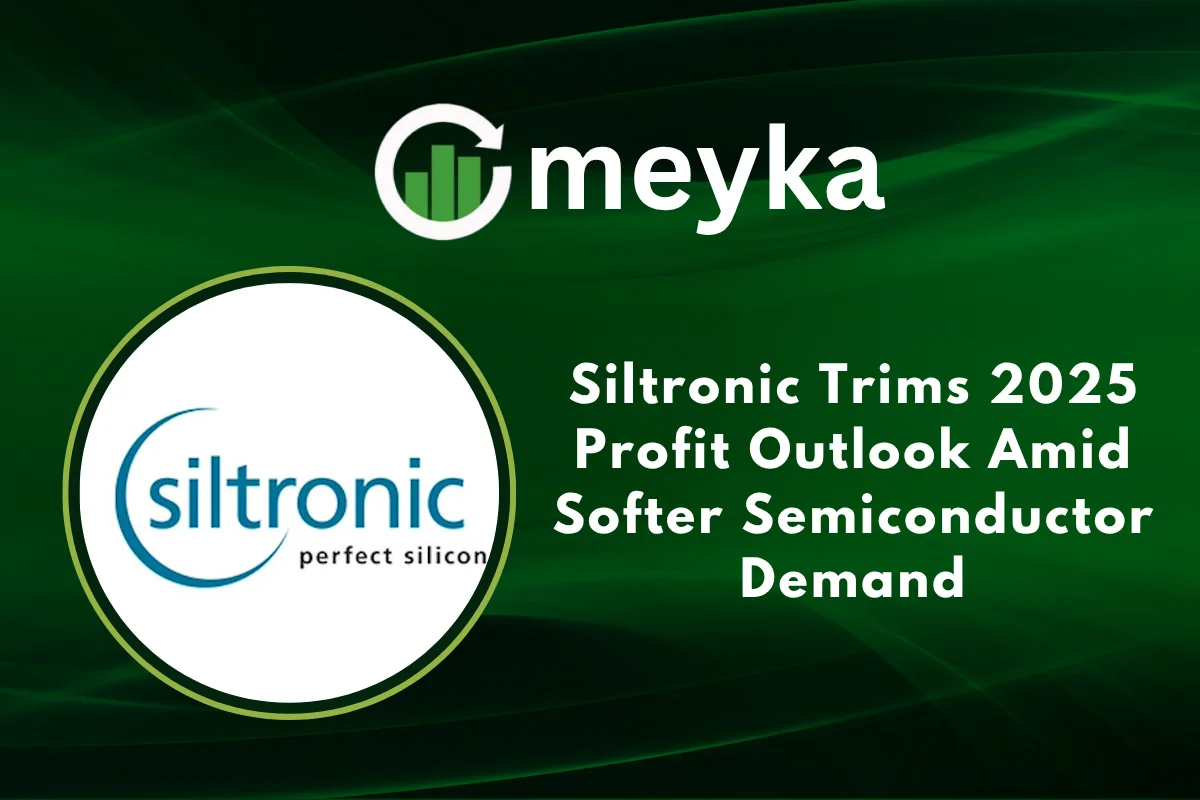Siltronic Trims 2025 Profit Outlook Amid Softer Semiconductor Demand
Siltronic AG, one of the world’s leading silicon wafer manufacturers, has lowered its 2025 profit outlook as global semiconductor demand cools. The adjustment comes amid shifting market dynamics, a slower recovery in the electronics sector, and ongoing uncertainty in global trade.
The company, which supplies key materials to major chipmakers, cited weaker-than-expected orders from both memory and logic chip producers as a major reason for the downward revision. The announcement triggered concern among investors, with Siltronic’s share price dipping shortly after the update.
A Challenging Landscape for Semiconductor Manufacturers
The semiconductor industry has been under pressure since the post-pandemic boom cooled off. After years of rapid expansion fueled by remote work, AI innovation, and automotive demand, the sector is now experiencing cyclical moderation.
According to Bloomberg, chip inventories have swelled in some markets, forcing companies like Siltronic to adjust production targets and margins. The firm’s updated forecast projects lower revenue growth and a narrower operating profit margin compared to earlier estimates.
Despite this, Siltronic maintains a strong balance sheet and continues to invest in next-generation wafer technologies that could support future growth. Its management expressed optimism that demand would recover in the second half of 2025 as AI chips and green energy technologies create new market opportunities.
What’s Behind the Weaker Semiconductor Demand?
Several factors have contributed to the current slowdown in the semiconductor sector:
- Global Inventory Glut: Many chipmakers overproduced during the pandemic, leading to an oversupply in certain categories like memory chips and microcontrollers.
- Soft Consumer Electronics Sales: Smartphone and PC shipments have fallen globally, reducing demand for wafers.
- Geopolitical Tensions: Trade restrictions between the U.S. and China have disrupted semiconductor supply chains and capital expenditure plans.
- Economic Uncertainty: Slower economic growth in major regions such as Europe and Asia has dampened corporate investment.
These headwinds are expected to ease gradually, but Siltronic’s management is preparing for another cautious year. The company plans to streamline operations, reduce capital expenditures, and optimize its global manufacturing network.
AI Stocks and the Semiconductor Connection
While Siltronic faces short-term challenges, the AI revolution is reshaping long-term demand patterns across the stock market. Companies focused on AI chips, cloud infrastructure, and data centers are driving the next wave of semiconductor investment.
Investors conducting stock research have noticed that chip manufacturers linked to AI development, such as Nvidia, TSMC, and AMD, continue to post strong earnings growth. These trends indirectly benefit wafer suppliers like Siltronic, whose products are essential to chip fabrication.
Analysts at Reuters note that once inventory levels normalize, companies that provide critical upstream materials will likely rebound. As AI-driven workloads expand, the demand for advanced wafers capable of supporting higher processing power will increase substantially.
Siltronic’s Strategic Response
Despite trimming its profit outlook, Siltronic remains focused on long-term innovation. The company is accelerating research into 300mm and 450mm wafers, which enable more powerful and energy-efficient chip designs.
Siltronic is also deepening collaborations with major semiconductor manufacturers to ensure alignment with emerging technology needs. Its partnerships with leading foundries in Taiwan, South Korea, and Germany are key to sustaining growth once the market stabilizes.
The company’s CEO emphasized that while 2025 may bring challenges, Siltronic’s strategic investments will position it strongly for the next upcycle. The firm’s cost optimization and focus on high-performance wafers are expected to enhance profitability once semiconductor demand rebounds.
Stock Market Reaction and Investor Sentiment
Following the announcement, Siltronic’s shares fell modestly on the Frankfurt Stock Exchange as traders reacted to the trimmed guidance. The company’s market capitalization now hovers near €3 billion, down from earlier highs driven by semiconductor boom optimism.
Market analysts have mixed views. Some believe the revision was a prudent move, reflecting realistic demand expectations. Others worry that continued softness in chip sales could delay recovery until 2026.
Long-term investors, however, remain cautiously optimistic. Many see Siltronic as a vital player in the semiconductor value chain, especially as new technologies like AI computing, autonomous vehicles, and green energy systems continue to advance.
For those following AI stocks and broader stock market trends, Siltronic’s trajectory offers insight into the cyclical nature of high-tech manufacturing and its dependence on global demand cycles.
Outlook for 2025 and Beyond
Looking ahead, Siltronic expects a gradual return to growth as industry conditions improve. The company predicts steady recovery in the second half of 2025, driven by:
- Renewed semiconductor capital spending in Asia and the U.S.
- Expansion of AI computing and 5G infrastructure projects.
- Rising demand for power-efficient chips in electric vehicles and renewable energy systems.
Despite near-term uncertainty, Siltronic’s core strengths, advanced wafer technology, a diversified client base, and a commitment to innovation make it a strong contender for long-term investors tracking the semiconductor cycle.
Conclusion
The decision by Siltronic to cut its 2025 profit outlook underscores the volatility of the global semiconductor market. Yet, the company’s strategic adaptability and focus on innovation provide reasons for optimism. As demand for AI-driven technologies and green energy solutions rises, Siltronic’s expertise in high-quality wafer manufacturing could pave the way for future growth.
For investors navigating the complex world of AI stocks and semiconductor equities, keeping an eye on Siltronic’s recovery trajectory may offer valuable insight into broader market trends.
FAQs
Siltronic revised its forecast due to weaker semiconductor demand, excess chip inventories, and a slower recovery in consumer electronics markets.
AI-driven demand for high-performance chips may boost wafer sales in the long term, helping offset the current downturn in traditional semiconductor segments.
Siltronic remains a key player in the global semiconductor supply chain. Investors should monitor market conditions and company updates before making decisions.
Disclaimer:
The content shared by Meyka AI PTY LTD is solely for research and informational purposes. Meyka is not a financial advisory service, and the information provided should not be considered investment or trading advice.






